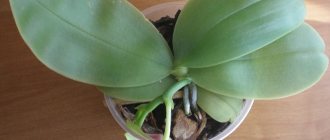Why do purchased indoor flowers die?
Today it has become fashionable to give flowering plants in pots instead of bouquets of cut flowers.
Azaleas, thanks to their luxurious abundant flowering, are most often purchased as a bouquet substitute. After all, in flower shops this small bush looks so attractive! Unfortunately, those who received an azalea as a gift are not always experts in home floriculture. Therefore, in a plant that does not receive proper attention, the buds dry out without ever blooming, the leaves of the azalea turn yellow and fall off, and sometimes even resuscitation cannot save it.
Often the problem may not only be that the new owners do not know how to create the right conditions for the plant. Sometimes the problem is that in the store, before sale, the plant was abundantly “fed” with bioactive compounds that stimulate flowering. At the same time, the plant did not receive the other conditions it needed.
In order for your luxurious azaleas to live long and delight the eye and soul with their lush blooms, you need to know the features of caring for this capricious one at home.
Humidity won't hurt, but will help.
The flower prefers high humidity, which means it must be provided. First, you should place the pot with the plant on a tray with expanded clay, which should be constantly wet. It is useful to periodically rinse expanded clay under running water. Secondly, caring for azalea at home requires constant spraying. It is advisable to do this daily, and in hot weather - twice a day. During the flowering period, spraying is not necessary to prevent spots from appearing on the flowers.
Rhododendron care
If the plant began to shed its leaves, but you managed to save it, the question naturally arises - what to do next, how to care for the rhododendron at home in order to protect your green friend from a repetition of such a disaster. Here are the most important rules.
- Organize proper watering:
- For watering, use only soft, settled, cool water. Boiled, distilled or drinking water is suitable. You can place small ice cubes on the ground in a pot with a plant. They will gradually melt, cool the plant and maintain soil moisture.
Monitor the moisture content of the substrate in which the azalea grows. It should not be over-moistened, but drying out is also unacceptable. It is better to water through a tray lined with pebbles, expanded clay or sphagnum moss. This will allow you to maintain an ideal microclimate around the flower. The second watering option is to completely immerse the flower pot in a container of water until air bubbles stop coming out of the substrate.
- The water needs to be slightly acidified by adding five to ten drops of apple cider vinegar or lemon juice per liter. Watering with this solution is required once a month.
- It is good to put agricultural hydrogel at the bottom of the pot in the area of the roots. It will not allow the azalea to be flooded, absorbing excess moisture, and will not allow it to die if you forget about watering.
- Only acidic soil will do, so use either ready-made professional mixtures for azaleas, or make it yourself by mixing 1:1 acidic high-moor peat and rotted pine litter.
- Do not plant by deepening the root collar.
- Azaleas can only be replanted after the flowering period has ended.
Provide the necessary lighting: the plant loves bright light, but does not tolerate direct sunlight at all. It is preferable to place it on the east window. On southern windows, the flower pot must be shaded or placed on a stand deep into the room.
Create the desired microclimate: azaleas require high humidity, so they need daily spraying of soft water on the leaves. Adjust the spray bottle so that the water droplets resemble fog. Large drops of water can harm foliage and leave unsightly spots. Do not spray flowers and buds.
Grow azaleas in a cool room: comfortable air temperature is up to 15–18 degrees Celsius.
Plant life cycle
The azalea's life cycle is strongly tied to the seasons. Early varieties bloom from December to April, mid-late varieties from January to March, late varieties from February to April. More information about how many times a year and when azalea blooms can be found here. And after flowering ends, the question arises: what to do next at home? First you need to decide what can be considered the end of flowering? A sign of the end of flowering is the drying and dropping of flowers. Some varieties also shed leaves.
How to care for a plant in a pot when it has bloomed?
In order for the plant to safely spend the dormant period and emerge from it stronger and rested, it is important to properly care for it. The following explains what to do with a faded flower and how to preserve it.
Do I need to trim?
Pruning of faded azaleas is necessary. Procedure:
- First - all the branches on which the flowers have faded, up to a height of 3-4 leaves. You don’t need to trim, but pick off the dried inflorescences.
- Next - all the weak and thin branches to thin out the thickened crown (at the same time you can form the azalea crown of the desired shape).
Some time after the leaves fall, young shoots begin to grow. They must be pinched to prevent them from bushing.
The plant is pruned only with sterile pruning shears; the cut site is also treated with RanNet disinfectant paste, which will help the cut heal faster and provide protection from infection.
Temperature
Providing the required temperature depends on the time of year:
- In the summer, immediately after flowering, azaleas are kept in a shady place in the garden at a temperature no higher than +20 °C.
- In autumn (from October to December) the lowest temperature is needed (+7–11 °C) - this can be achieved by placing the plant on an insulated loggia.
- At the beginning of winter, it is best to keep azalea at a temperature no higher than +10 °C. In urban conditions, this temperature can be achieved on an insulated loggia, and if there is none, then near the balcony door.
Humidity
The humidity in the room where the azalea overwinters should be at least 70%. Since apartments are usually much drier in winter, you can place an air humidifier next to the flower, and also spray it with a spray bottle every two to three days.
You should not place a pot of azalea near a hot radiator.
Lighting
Wintering azaleas need a minimal amount of light. Since the required temperature can usually be provided close to the windows, to create partial shade you will have to cover these windows with some materials that poorly transmit light - sheets of thick paper, newspapers, etc.
Watering
It is necessary to water the azalea rarely during the dormant period. It is better to take settled water, ideally melt water (in winter this is not a problem). It should be cold, but not icy (15–16 °C). Since azalea loves high acidity, citric acid is added to the water (several crystals per 1 liter).
The frequency of watering depends on the room temperature: as soon as the surface of the soil in the pot is dry, it is necessary to water the flower.
Top dressing
Despite the fact that after flowering there is a period of rest, azaleas need fertilizer. They will give the flower the opportunity to enter a new flowering stronger and healthier.
Always fertilize the azalea after watering so that the earthen ball is moist.
Popular articles Description and application of folded thuja Kornik
After flowering, the azalea is fed with special liquid fertilizers:
- Garden of Miracles (dilute 8–10 ml of solution in a liter of water, water at the root once a month).
- Azalea (dilute 8-10 ml in 1 liter of water, water at the root once every 3-4 weeks).
The main principle of fertilizing azaleas during the dormant period is a high nitrogen content. It promotes good recovery of plants after flowering and their active growing season in the future.
Prevention
When growing azaleas, it is important to maintain a balance of conditions. The flower is demanding in terms of temperature, humidity and lighting levels, as well as nutrition.
To maintain the ideal appearance of foliage and achieve flowering, the following recommendations must be followed:
- Control the humidity level in the room. Ideal figures are 60–70%. During the heating season, the foliage is sprayed several times a day.
- Maintain soil moisture levels. A common mistake made by inexperienced gardeners is frequent but meager watering. Water does not penetrate deep into the root system, and it suffers from a lack of moisture. Experienced gardeners advise watering the azalea by immersing the pot in a pan of water. The earth ball will absorb the right amount of water, and the roots will feel comfortable.
- Provide soft but bright lighting. The flower will feel most comfortable on western or eastern windows.
- Regularly fertilize with specialized fertilizers.
- Maintain soil acidity levels.
- Follow the recommendations for choosing soil composition and timing of plant replanting.
Azalea is a capricious flower that requires conditions of maintenance and care. To find a common language with him, it is worth making a lot of effort and following the recommendations of experienced flower growers.
5/5 — (1 vote)
Feeding to help the plant
In order for an azalea to develop well and delight others with its blooms, it must be fed.
From February to August, fertilizer should be applied once a week. This can be ammonium nitrate, ammonium sulfate, superphosphate or potassium sulfate. In winter and autumn, superphosphate will not hurt; it promotes good budding. To maintain the required soil acidity, plants can be watered occasionally, for example, once every two weeks, with a solution of citric acid. To do this, dilute 1 teaspoon of acid in two liters of water. Another way to acidify the soil is to water the flower with a solution (0.2%) of sulfuric acid after 3-4 months. Each time this should be done only after the soil has been moistened.
Read also: How to grow aquilegia from seeds? When to plant, stratification, planting
There are special fertilizers used to feed beautifully flowering plants. This is, for example, “Kemira” or “Ferovit”. They are used as a means to prevent various diseases.
Saving a whimsical azalea and ways to get rid of problems
How to save a drying plant in types, methods, sequence of actions, reasons for its occurrence is described below. Let's look at each situation in more detail.
If an azalea has dropped all its leaves and its branches are actively drying out, it means that the plant is in danger of dying.
Cause
lies:
- in violations of the root system;
- after rearrangement;
- under conditions of unexpected stress;
- inappropriate transplants into a new pot while the plant is flowering.
Pests can also be the culprit. It is necessary to cut off everything dry to those places where there is still living tissue, and then diligently monitor the condition of the bush.
Leaves may dry out or wrinkle due to insufficient watering or air humidity. In this case, the dry soil underneath must be quickly saturated with moisture. To do this, simply lower the entire pot with the plant at the base into cool water collected in a container. It should not be forgotten that moisture absorbed by overdried soil should not have increased hardness. In this case, the water should be boiled and cooled, or you should use settled running liquid.
The reason why azaleas have yellowing foliage may be chlorosis. This means that the earth is alkalized with calcium. The solution is simple - water with acidified water at a temperature of no more than 15 - 16 degrees Celsius.
The leaves turn black, or rather, growing dark red and brown spots appear on them when the plant is infected with septoria. It's a fungus. It is best suited to conditions of high humidity and heat. The period of occurrence is spring. Treatment with chemicals is the solution. Prevention – compliance with the requirements for plant care, as well as preventing excessive crowding of representatives of indoor flora.
If the young leaves dry out, and the older ones not only turn yellow, but also crumble, and brown spots appear on the surface of both, then the flowering has become infected.
Often, in addition to the previous symptoms, over time there appears a feeling that the leaves are covered with sticky syrup. Scale insects can suck the strength of a plant by feeding on its juices. The form of control at the height of the disease for azalea is treatment with an insecticide; at the beginning of the infection, “washing” each leaf with a soap solution.
Leaves can also fall off due to the plant being infested with spider mites. A thin cobweb is noticeable in the internodes of the stems. The leaves change their appearance, often curling into tubes, and begin to crumble. The buds dry out. The reason for the appearance of harmful insects is excessive dry air, as well as a long absence of spraying. They are fighting the problem that has overtaken the rhododendron by spraying the plant with clean water and washing the foliage with a soapy solution.
Falling, as well as curvature of leaves, occurs due to another problem affecting the azalea. Mealyworms cause very heavy damage. The insecticide again becomes a savior for the bush.
If the tips of the leaves, especially young ones, are affected, you should look under them. Most likely the problem is caused by aphids. The pest can be destroyed by “washing” the bush with a soapy water solution.
How to resuscitate?
How to resuscitate and revive an azalea, what to do if it has dried up or how to save a dried up azalea?
You need to prepare:
- soil;
- sand;
- ice;
- cold water;
- Activated carbon;
- ash;
- boric acid (citric);
- pine needles;
- drug "Zircon".
The azalea is removed from the pot and the roots are dipped in cold water and washed carefully. Having cleared the substrate, place the plant under a stream of cool running water, plant it in prepared soil (intended for flowers) and leave overnight.
In the morning, cover the soil with ice and water with cold water.
It is necessary to protect the azalea from direct rays of the sun.
Prepare settled water (2 days) by placing a few drops of acid (citric or boric) and the Zircon preparation into it.
Water the azalea with this solution until the result is achieved. The pot with the azalea should be placed on a tray with wet expanded clay and left in a draft (in the refrigerator in the summer). Water every other day with cold water and place pine needles on top of the soil.
What causes azalea diseases
If the leaves of an azalea first curl up and then dry out, it means that the problem lies in moth infestation of the shrub. You won't have to look for it for long. It looks like a spindle-shaped caterpillar. The sequence of actions to combat it is quite simple - collecting moths and treating the plant with a chemical preparation (insecticide).
The azalea also dries up due to long-standing infestation by the rhododendron bug.
Probably, a little earlier it was missed that discolored spots appeared on the leaves by the rhododendron bug, which itself is 03.-0.4 cm long. Eggs are laid on the underside of the leaves. The overwintered new generation hatches in the plant tissue and continues to actively damage the bush. You can save azalea with diazinon.
If your favorite azalea sheds its leaves, but not in the way described in previous cases, any experienced gardener knows what to do. In the case when there is fusarium on the plant, the whole process is accompanied by a number of other symptoms. Among them, a change in the appearance of the foliage, its blanching, then yellowing, curling and wilting, stands out. The buds turn brown and die. Fusarium first appears in the pot, at the roots. The reason is a too humid environment and a significant excess of the required thermal regime.
Save treatments:
- antibiotics;
- fungicides;
- copper sulfate, followed by treatment with potassium permanganate after 14 days.
Noticing that the "potted beauty" has turned black in the form of irregular angular brown spots with a red outline on the bottom of the foliage, you can guess that the plant has cercospora blight. At the same time, a gray coating is noticeable on the top of the foliage.
If ash-gray and brown spots appear on the top edges, it means that the plant has become ill with phyllostictosis.
In both cases, you should resort to the use of fungicides, as well as reducing humidity, including reducing the number of waterings and spraying.
By shedding its leaves, the bush informs its owners about problems. Accompanying signs indicate which ones.
If the “fastidious” one threw off the greens, it means that she was not satisfied with the level of care, and she decided to get sick. The “capricious lady” from the world of flora is worth courting. And then in return she will delight you with her beauty.
When an azalea sheds its leaves, why this happens should be known in all cases, as well as how to understand and follow all the conditions for caring for this plant. Periodic inspection, removal of damaged areas, and timely treatment prevent its death.
Everything you need to know about when and why azalea dries is outlined in this article. This plant feels comfortable only if it receives a lot of attention. And compliance with all care requirements will be expressed in abundant flowering of the bush.
Azalea occupies its niche in the garden classification. This is a plant of a separate variety, belonging to rhododendrons. It has many varieties, but there are certain parameters that are characteristic of all plants: height from 30 centimeters to three meters, colors in different shades: red, blue, white, pink. Azalea looks attractive both on a summer cottage and on a windowsill. Its varieties are divided into deciduous and evergreen. The latter variety is classified as “Japanese”; they bloom in May and open in full beauty. Deciduous ones bloom in June and shed their leaves in the fall. Many people are confused by the fact that azaleas can lose leaves; inexperienced gardeners worry that the plant is sick. We will deal with cases when an indoor azalea sheds its leaves for natural reasons, and when they turn brown and dry out due to illness, we will show photos and tell you what to do for treatment and care at home.
How to revive it if the green or yellow foliage falls off and the buds fly off?
Below are step-by-step instructions on how to save a rhododendron, depending on why it lost its leaves, flowers and buds.
If the leaves of the shrub are falling off, the buds are drooping, and the flowers are drying up, you are probably in a hurry to replant your new green pet.
- Help the plant's root system by watering the soil with zircon solution.
- Transplantation of azaleas should occur in the spring, in the first half. To avoid damage to the roots, use the transshipment method. The volume of the pot should be 2 cm less than the crown of the azalea. Fill the bottom with drainage.
- Do not move flowering shrubs from one place to another.
Important! During the flowering period, the plant cannot be sprayed; the flowers do not tolerate moisture well and may fall off.
In the case when the leaves turn yellow and the plant loses them, use soft water for watering (why the leaves, buds and stems of rhododendron turn yellow and how to save an azalea, find out here). If there is no change for the better, then change the substrate; perhaps there is clay soil in the pot.
Foliage may turn yellow and fall off if the plant is damaged by scale insects. The insect can be recognized by the characteristic brown plaques that are visible on the surface of the leaves.
The color of the leaves gradually fades, then a sticky coating and shine forms, and eventually the leaf completely turns yellow and falls off. They immediately noticed and recognized the pest; just treat it with a soap solution. In the advanced stage of plant damage, it is necessary to use special chemicals.
Do not allow water to accumulate in the base of the pot to avoid rotting in the root system.
Azaleas can shed green leaves due to very dry air, especially in winter when the heating is turned on, and when pests appear.
- Examine the leaf of the plant on the reverse side and the internodes; the presence of the finest threads indicates that a spider mite has infested. It appears in very dry air.
- Look at the flower with a soapy sponge and wash it in the shower with warm water. Spray daily, usually after these procedures the pest disappears. In case of severe mite infestation, spray with 0.15% Actellica solution.
Important! Before using the fertilizer, carefully study the instructions for preparation and dosage; they may vary depending on the manufacturer.
If a plant sheds brown, almost blackened leaves, it means it is suffering from a fungal infection (read why the edges and insides of azalea leaves turn black and why they fall off and how to help the plant). Tear off the affected leaves, treat the flower and soil in the pot with fungicidal preparations.
Another possible cause of darkening of leaves is damage by black thrips. A small insect, less than one millimeter in size. As a rule, they are located on the inside of the leaf blades; black spots also form there, which have a grayish tint on the upper part of the leaf.
To combat the pest, you need to use a chemical treatment, such as malathion emulsion.
If the leaves of an indoor rhododendron bush turn red and fall off, there may be several reasons:
- Most often, reddened fallen leaves appear when the plant is exposed to direct sunlight.
- Azaleas need to be fertilized; if you haven’t done this, the plant may have a lack of phosphorus. Fertilize it in accordance with the fertilizing period and follow the recommended dosage.
- Leaves may turn red from too much fertilizer. Then rinse the soil, place the flower in the sink and water it with water so that the water does not flow out through the edges of the pot, but only from the drainage holes. Excess fertilizer will be washed away with water.
If the azalea has completely crumbled, it is necessary to urgently take all measures to resuscitate it. Otherwise, lack of adequate nutrition will lead to the death of the flower.
Popular articles How to restore wilted roses at home
To save it, you need to put a transparent plastic bag on the pot and secure it with an elastic band at the bottom. In such conditions of high humidity, new leaves will grow. During the rehabilitation period, there is no need to water; the soil under the bag remains moist. After new leaves appear on the shoots, the bag is removed.
Reference. You can determine the health of an azalea by examining the appearance of the leaves. Can a dying azalea always be saved and how can the plant be revived? On our website you can find out why azalea withers, dries and brightens and how to save it.
Possible errors and their consequences
When caring for azaleas, mistakes cannot be avoided.
- Unsuitable soil. The plant will not receive the necessary substances.
- Not a sterile instrument. Can lead to infection of azaleas with pathogenic flora.
- Root damage. Deadly and should be avoided as much as possible.
- No trimming or pinching. Affects the appearance of the azalea, but is not dangerous.
- Insufficient air humidity. May cause drying and cause some diseases.
- Feeding and stimulation immediately after flowering. May cause root damage and death.
- Watering with inappropriate water. This is fraught with infections.
- Overfeeding or complete lack of feeding. Both can destroy the azalea.
Each of these mistakes can lead to serious plant disease or even death. Also, improper care, pests and other reasons can cause the plant not to bloom. You can find out more about why azalea does not bloom here.
Flower growers' mistakes that cause azaleas to fall off their leaves
Azalea - care at home after purchase
Azalea is a very capricious crop. She constantly requires increased attention. Failure to follow the rules of care will lead to the falling of leaves and buds.
Azalea foliage falling
Improper watering
It is recommended to water with melted or settled water at room temperature.
On a note! Adding citric or acetic acid to irrigation water will adjust the pH level.
The main reason why azalea leaves dry out and fall off is waterlogging of the soil. Excess moisture causes not only the leaves to change color, but also the stems. They begin to turn black and dry out.
Watering the plantTemperature violation
The plant can dry out due to non-compliance with the temperature regime. If the azalea has dropped its leaves, it is urgent to lower the temperature in the room. It should not exceed +18 degrees. During the growing season it must be reduced to +12 degrees. A plant may shed all its buds or flowers if these rules are not followed.
Placing a flower in the wrong place
The main reason why an azalea sheds its leaves is the incorrect placement of the indoor flower. It is necessary to choose a place for the plant that is illuminated, but the leaves should not be exposed to direct sunlight. Azaleas will grow best on the east side. When placed on the south side, the sun may scorch the green leaves of the plant.
Advice! In autumn it is necessary to provide additional lighting for azaleas.
Failure to comply with recommendations for optimal air humidity
If the humidity level does not meet the requirements, the foliage dries out and turns yellow. Spraying should be carried out regularly, but not at the time of flowering. If water gets on the inflorescences, they may fall off.
Wrong choice of pot
Sometimes a plant sheds its leaves due to an incorrectly selected pot. If an azalea drops its leaves, what should I do? It is necessary to transplant the flower into a large container. The root system is horizontal, so the pot should be wide and shallow.
Flower container
Excessive soil loosening or soil depletion
When using a substrate enriched with lime, the azalea may wilt and darken. For this species it is recommended to use acidic soil.
Note! It is prohibited to use fertilizers containing calcium
Loosening should be done as carefully and carefully as possible. Due to the superficial location of the roots, they can be very easily damaged.
Due to the superficial location of the roots, they can be very easily damaged.
Loosening should be done as carefully and carefully as possible. Due to the superficial location of the roots, they can be very easily damaged.
Why does a flower shed its leaves?
Evergreen varieties of azaleas are distinguished by their decorative properties. However, in some cases the plant drops its leaves. There can be a large number of reasons for such sudden changes, among the most common are:
- Damage to the root system. This problem especially often arises after transplantation, when the grower damages the roots with careless movements.
- Lack of moisture. A common reason is that if watering is improper, the flower begins to feel a lack of moisture. The leaves turn yellow and fall off.
- Dry air and high temperatures. Azalea prefers moist conditions, so regular moisturizing is recommended. If the air is dry and the pot is located near heating devices, the plant begins to lose moisture and dry out.
- Cramped pot. Leaves may wither and fall off if the pot is chosen incorrectly. Too cramped conditions interfere with the normal development of indoor flowers.
- Lack of light. Azalea loves some partial shade. The flower will not develop normally away from the windows.
- Frequent movement around the room. In order for the flower to bloom profusely, it is necessary to avoid frequent movements, as the plant may feel stressed.
Very often the cause of the problem is pests and diseases.
There can be a large number of reasons why an azalea dries out, so you should take a close look at the crop.
There can be many reasons for leaf loss
Video: TEST: recipe for how to revive dried mascara, does it work or not?
When an azalea is sick, the heart always hurts. This is such a beautiful flower that I now don’t understand the time when I didn’t even have the slightest thought of having one at home. It makes it more beautiful and enjoyable, and when it blooms, I can’t tell you in words how beautiful it is.
I have encountered problems such as the leaves completely falling off after the azalea was brought home from the store. In principle, you can understand that the plant sheds its leaves because the conditions of the plant have changed to some extent. Stores often use some kind of special system to support the life of the plant, so it can adapt for a long time to home, natural conditions. As far as I know, in this case they recommend pruning dry branches that no longer have leaves, or lightly pruning active and living branches that have also dropped their leaves.
What is drying out of a houseplant?
Drying is a phenomenon when more water evaporates from plant leaves than enters them from the soil and air.
Azalea is a very demanding flower to the environment. She can't stand the heat and will be much more comfortable in a cool place. The optimal temperature is from 12 to 18 degrees. The flower is also intolerant to direct sunlight. At the same time, she will not be able to survive in a dark place. It is important! You cannot expose an azalea to a stressful situation during transportation and buy it in winter: it will freeze and not one or two layers of craft paper will save the plant.
Appearance
During drought, the appearance of an azalea may change even before the active phase begins.
Signs of drought:
- the appearance of dry grayish spots;
- pest invasion (read about pests and diseases of azaleas here);
- the appearance of brown or brown spots;
- the tips of the leaves dry out and turn brown;
- leaf fall.
What is the danger to rhododendron?
Azalea is a very delicate flower and may simply not tolerate drying out. It should not be left to grow in a small pot for a long time. After flowering has ended, it must be replanted using the transshipment method.
Lack of attention to environmental conditions, pot size and soil composition can be dangerous for the plant. Drafts and frequent temperature changes will result in leaves turning brown and drying out for the plant. Another reason for the formation of brown tips on the leaves is the use of too hard water for watering. Or the plant is too dry.
Main problems with flowers and ways to solve them at home
In order for a houseplant to bloom and please the eye, before purchasing it, you should familiarize yourself with its habitat and what will ultimately be required to cultivate it at home.
Azalea flower blooming
Leaves dry and fall off
Problems with the leaf blades of a plant begin, first of all, if it is not provided with a cool place and poor water is used for watering. After all, the optimal winter temperature is considered to be 15 degrees Celsius, and at the same time Azalea blooms beautifully. When it increases, the flower is able to shed not only its buds, but also all its leaves.
Knowing these features, Azaleas should be provided with a bright room without direct burning rays, where the winter temperature will be within 15-17 degrees Celsius. If the stem already has drying thin branches, they should be cut back to living tissue. The next step is replanting it in the acidic soil it needs and you will need to adjust the watering.
Leaves turn black and fall off
There can be two reasons for blackening of leaf blades
- Black thrips.
- Fusarium.
- Rhododendron mite.
In the first case, it is a small pest that is located on the leaf blades and feeds on the sap of the plant. After which the leaves turn black and die. To get rid of this pest, you need to treat Azalea with chemicals:
- Aktellik;
- Karbafos.
With the second disease, the leaves and trunk of the plant turn black. If almost the entire plant is affected by such blackness, then, alas, it cannot be saved. But at the beginning of the disease, treatment can be carried out by treating the surface of the trunks with Fundazol.
If infected with rhododendron mites (which are easy to detect, since the size of the mite is almost 4 mm), the azalea must be urgently treated with Diazinon; if this does not help, then after 10 days, treat with Actellik solution.
Blackening of leaves
The leaves are turning yellow
The first and most common cause is the disease chlorosis. This happens if the flower is overfed with fertilizer with a large amount of calcium. To get rid of this problem, you need to acidify the water used for irrigation and raise its temperature to 16 degrees Celsius.
Popular articles Description of Scots pine Fastigiata: planting and care
Also, leaf blades turn yellow when the plant is attacked by a pest - scale insects. For this purpose, it is necessary to inspect the leaf plates and if small brown spots are found that can be removed with a fingernail, then this is a scale insect. To get rid of it, you need to manually pick out all the pests and spray the Azalea with Actellik solution. This treatment must be carried out three times with an interval of 7 days.
The leaves have turned brown
Most likely, the plant is affected by a fungal disease or the leaf blades are simply burned by the sun (3). In the first case, we urgently change the soil in which the Azalea grows and pour boiling water over the pot to disinfect it. We treat the flower itself with Fundazol. After all the procedures, place the flower pot in partial shade and observe whether the brown spots on the leaves have stopped appearing. If the flower is burned by the sun, then we remove the damaged foliage and move the flower away from the sun's rays.
Drying buds
The buds can dry out due to increased temperature and very low humidity (4). To stop drying out the buds you need to:
- Reduce temperature to 16 degrees Celsius;
- Spray twice a day with warm water from a fine spray bottle;
- Move the pot away from the draft.
By fulfilling all the requirements for this decorative flower, you can achieve its lush bloom.
Drying buds
Step-by-step instructions: what to do next when the rhododendron fades?
Pruning, removing dead flowers
At the end of flowering, the azalea must be pruned.
This is necessary in order to ensure its subsequent flowering. When pruning, young shoots should be removed, overgrown branches should be trimmed so that three or four leaves remain on it. If the azalea has grown and can be thinned out. If desired, you can form a crown of any shape. What to do with faded flowers? If there are dried flowers left on the plant, they should also be cut off along with the flower stalks. And trim the extended branches. Pruning is done carefully so as not to injure the plant. This procedure is carried out using a sterile pruning shears around March or April, after flowering has ended.
Pruning is needed for:
- Bush formation.
- Future flowering.
- Beautiful appearance.
- Formation of a lush crown in the future.
After pruning, the azalea should be placed in a dark and cool place for about 2 months. This way you will provide her with a period of rest. During this time the plant will be able to rest and regain strength.
Also, after flowering, pinching is very important, that is, removing the growth point of a young shoot. It is better to pinch 3 times a year. Thanks to it, the crown of the plant will look beautiful and lush, and it will also promote budding. Pruning and pinching are very important for future flowering, its intensity depends on this.
Watch the video on the topic “Should I prune an azalea after flowering?”:
Temperature, humidity, lighting
Azalea is very capricious regarding air temperature. After flowering, and this is usually in the spring, it needs to be kept at a cool temperature. The optimal temperature is 12 - 16 degrees. At the same time, be sure to maintain high air humidity. Ideally, humidity should reach 70%. To do this, you can use a humidifier and also regularly spray the plant. After flowering, it is better to place the azalea in a dark place. A shaded room or other place with minimal lighting is quite suitable for her.
Care and replanting of azaleas after purchase
A flowering bush bought in a store must be placed in a well-lit place and cared for according to all the rules described above. The plant cannot be transplanted into a new pot immediately. If in the first days after purchase the azalea’s green leaves fall off, then there is nothing to worry about. The flower simply adapts to the new place. Changing the “place of residence” is stressful for any plant, to which they react by dropping a small number of leaves. For better acclimatization, the blooming beauty can be watered with water with the addition of Zircon.
You will be interested to know: Growing lilies at home in pots: planting and care step by step with photos
Replanting and pruning
The bush will need to be replanted after it has completely flowered. A new, not very deep container with drainage holes is selected. You can buy special acidic soil for azaleas at a flower shop or prepare it yourself by mixing:
- rotted coniferous soil - 2 parts;
- moss – 1 part;
- river sand – 1 part.
Roots that are too long are cut off when replanting azaleas. The transplanted bush must be pruned immediately so that the plant takes root faster and blooms well in the future. To do this, the tops of new shoots are pinched, and faded stems are cut off. Brown leaves are removed.
Young azaleas are replanted annually, and adult plants - every three years. If replanting is not done on time, the overgrown roots will cause stagnation of moisture in the pot and rotting of the soil. Various parasites and diseases will begin to appear.











